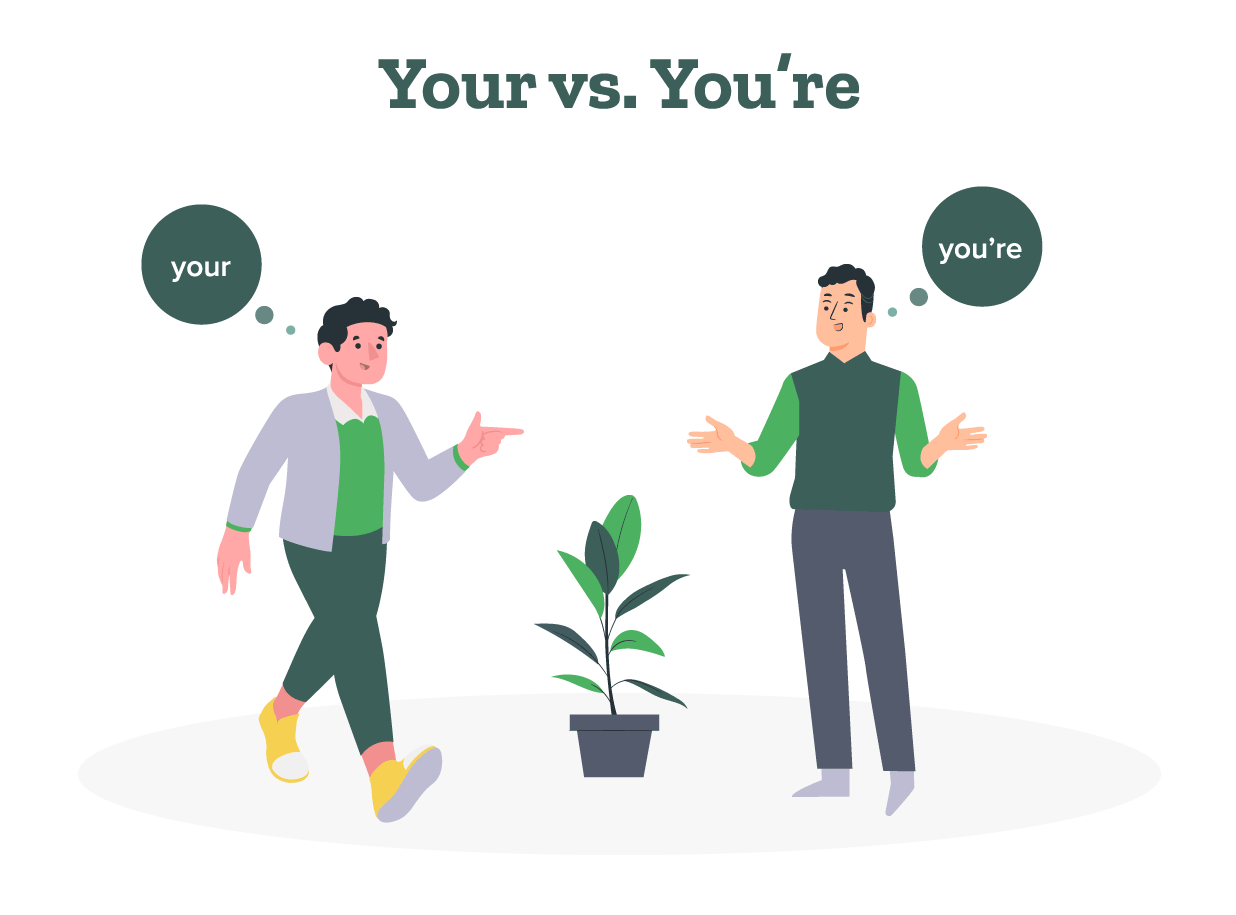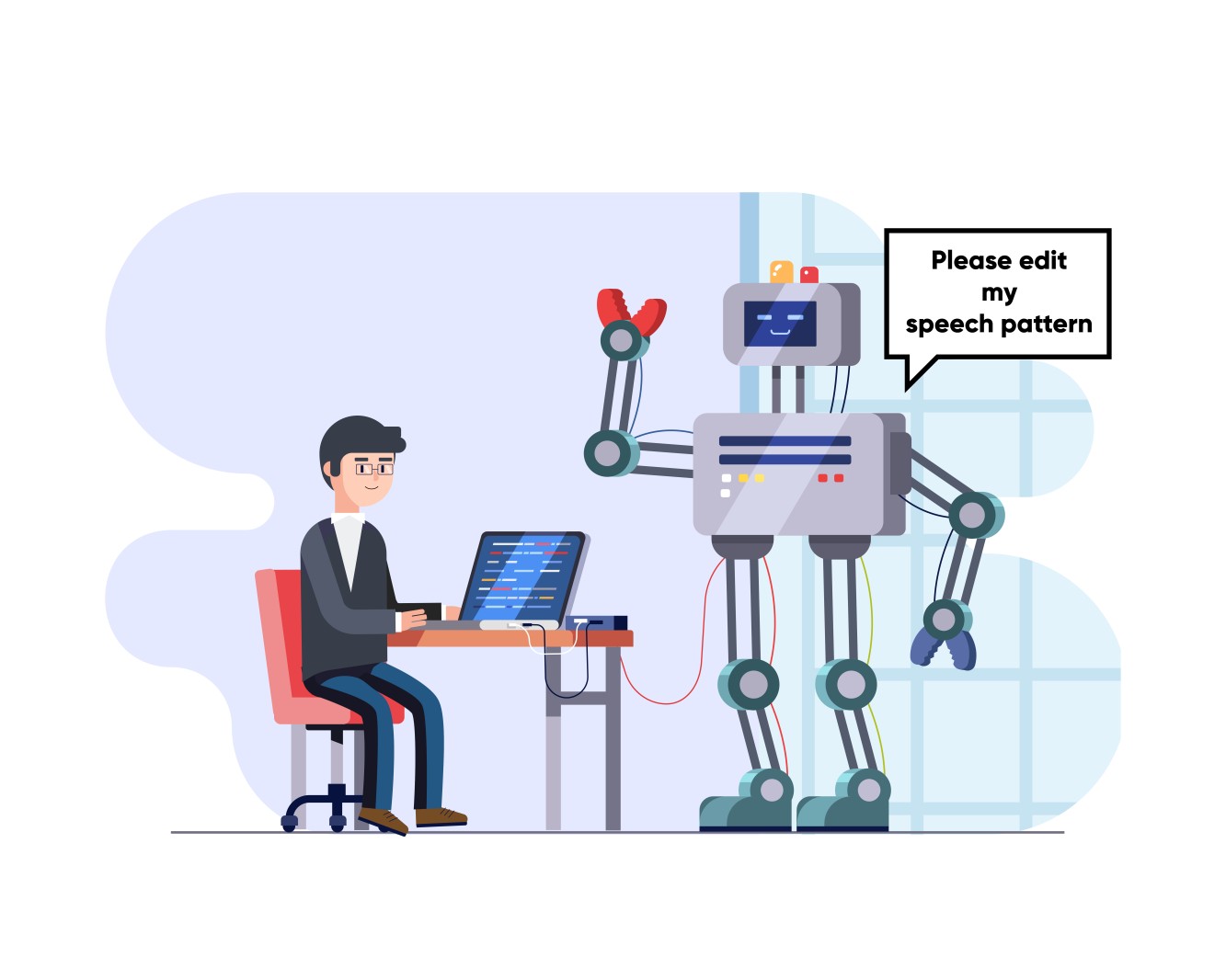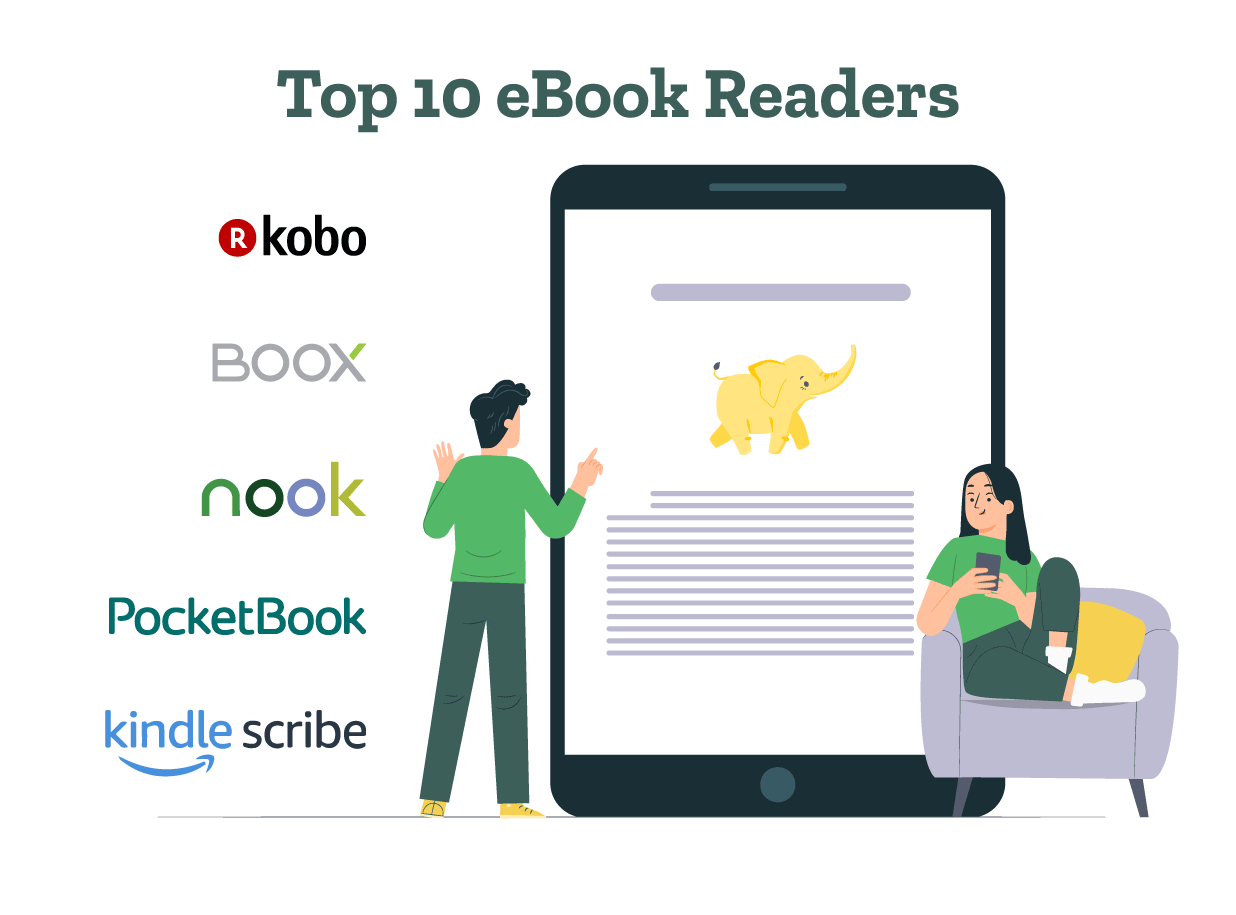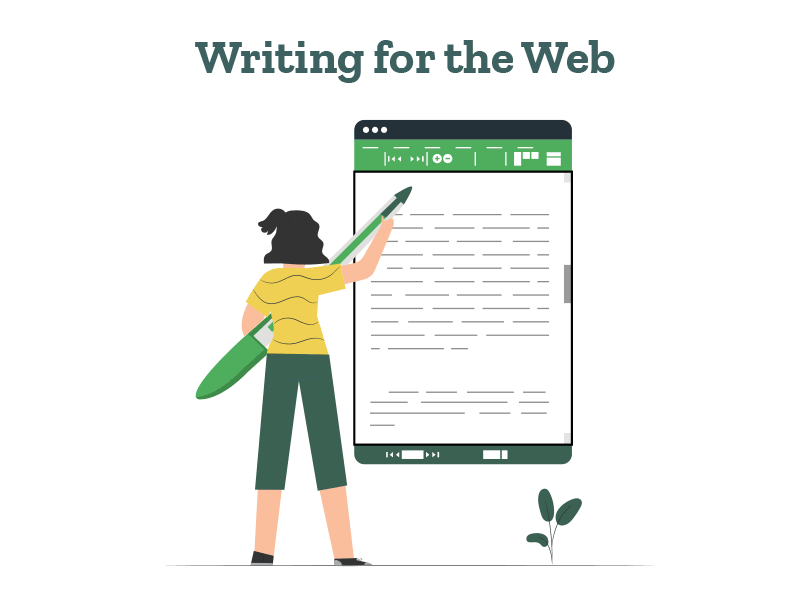- A List of Writing Contests in 2022 | Exciting Prizes!
- Em Dash vs. En Dash vs. Hyphen: When to Use Which
- Book Proofreading 101: The Beginner’s Guide
- Screenplay Editing: Importance, Cost, & Self-Editing Tips
- Screenplay Proofreading: Importance, Process, & Cost
- Script Proofreading: Rates, Process, & Proofreading Tips
- Manuscript Proofreading | Definition, Process & Standard Rates
- Tips to Write Better if English Is Your Second Language
- Novel Proofreading | Definition, Significance & Standard Rates
- Top 10 Must-Try Writing Prompt Generators in 2024
- 100+ Creative Writing Prompts for Masterful Storytelling
- Top 10 eBook Creator Tools in 2024: Free & Paid
- 50 Timeless and Unforgettable Book Covers of All Time
- What Is Flash Fiction? Definition, Examples & Types
- 80 Enchanting Christmas Writing Prompts for Your Next Story
- Your Guide to the Best eBook Readers in 2024
- Top 10 Book Review Clubs of 2025 to Share Literary Insights
- 2024’s Top 10 Self-Help Books for Better Living
- Writing Contests 2023: Cash Prizes, Free Entries, & More!
- Top 10 Book Marketing Services of 2024: Features and Costs
- What Is a Book Teaser and How to Write It: Tips and Examples
- Audiobook vs. EBook vs. Paperback in 2024: (Pros & Cons)
- How to Get a Literary Agent in 2024: The Complete Guide
- Alpha Readers: Where to Find Them and Alpha vs. Beta Readers
- Author Branding 101: How to Build a Powerful Author Brand
- A Guide on How to Write a Book Synopsis: Steps and Examples
- How to Write a Book Review (Meaning, Tips & Examples)
- 50 Best Literary Agents in the USA for Authors in 2024
- Building an Author Website: The Ultimate Guide with Examples
- Top 10 Book Printing Services for Authors in 2024
- 10 Best Free Online Grammar Checkers: Features and Ratings
- Top 10 Paraphrasing Tools for All (Free & Paid)
- Top 10 Book Editing Software in 2024 (Free & Paid)
- What Are Large Language Models and How They Work: Explained!
- Top 10 Hardcover Book Printing Services [Best of 2024]
- 2024’s Top 10 Setting Generators to Create Unique Settings
- Different Types of Characters in Stories That Steal the Show
- Top 10 Screenplay & Scriptwriting Software (Free & Paid)
- 10 Best AI Text Generators of 2024: Pros, Cons, and Prices
- Top 10 Must-Try Character Name Generators in 2024
- 10 Best AI Text Summarizers in 2024 (Free & Paid)
- 2024’s 10 Best Punctuation Checkers for Error-Free Text
- Top 10 AI Rewriters for Perfect Text in 2024 (Free & Paid)
- 11 Best Story Structures for Writers (+ Examples!)
- How to Write a Book with AI in 2024 (Free & Paid Tools)
- Writing Contests 2024: Cash Prizes & Free Entries!
- Patchwork Plagiarism: Definition, Types, & Examples
- 15 Powerful Writing Techniques for Authors in 2024
- Simple Resume Formats for Maximum Impact With Samples
- What Is a Complement in a Sentence? (Meaning, Types & Examples)
- What are Clauses? Definition, Meaning, Types, and Examples
- Persuasive Writing Guide: Techniques & Examples
- How to Paraphrase a Text (Examples + 10 Strategies!)
- 10 Best AI Writing Assistants of 2024 (Features + Pricing)
- Generative AI: Types, Impact, Advantages, Disadvantages
- A Simple Proofreading Checklist to Catch Every Mistake
- Top 10 AI Resume Checkers for Job Seekers (Free & Paid)
- 20 Best Comic Book Covers of All Time!
- How to Edit a Book: A Practical Guide with 7 Easy Steps
- How to Write an Autobiography (7 Amazing Strategies!)
- How to Publish a Comic Book: Nine Steps & Publishing Costs
- Passive and Active Voice (Meaning, Examples & Uses)
- How to Publish a Short Story & Best Publishing Platforms
- What Is Expository Writing? Types, Examples, & 10 Tips
- 10 Best Introduction Generators (Includes Free AI Tools!)
- Creative Writing: A Beginner’s Guide to Get Started
- How to Sell Books Online (Steps, Best Platforms & Tools)
- Top 10 Book Promotion Services for Authors (2025)
- 15 Different Types of Poems: Examples & Insight into Poetic Styles
- 25 Figures of Speech Simplified: Definitions and Examples
- 10 Best Book Writing Apps for Writers 2025: Free & Paid!
- Top 10 AI Humanizers of 2025 [Free & Paid Tools]
- Top 101 Bone-Chilling Horror Writing Prompts
- How to Write a Poem: Step-by-Step Guide to Writing Poetry
- Top 10 Book Writing Software, Websites, and Tools in 2025
- 100+ Amazing Short Story Ideas to Craft Unforgettable Stories
- The Top 10 Literary Devices: Definitions & Examples
- Top 10 AI Translators for High-Quality Translation in 2025
- Top 10 AI Tools for Research in 2025 (Fast & Efficient!)
- 50 Best Essay Prompts for College Students in 2025
- Top 10 Book Distribution Services for Authors in 2025
- Best 101 Greatest Fictional Characters of All Time
- Top 10 Book Title Generators of 2025
- Best Fonts and Sizes for Books: A Complete Guide
- What Is an Adjective? Definition, Usage & Examples
- How to Track Changes in Google Docs: A 7-Step Guide
- Best Book Review Sites of 2025: Top 10 Picks
- Parts of a Book: A Practical, Easy-to-Understand Guide
- What Is an Anthology? Meaning, Types, & Anthology Examples
- How to Write a Book Report | Steps, Examples & Free Template
- 10 Best Plot Generators for Engaging Storytelling in 2025
- 30 Powerful Poems About Life to Inspire and Uplift You
- What Is a Poem? Poetry Definition, Elements, & Examples
- Metonymy: Definition, Examples, and How to Use It In Writing
- 10 Best AI Detector Tools in 2025
- How to Write a CV with AI in 9 Steps (+ AI CV Builders)
- What Is an Adverb? Definition, Types, & Practical Examples
- How to Create the Perfect Book Trailer for Free
- Writing Contests 2025: Cash Prizes, Free Entries, and More!
- Top 10 Book Publishing Companies in 2025
- 14 Punctuation Marks: A Guide on How to Use with Examples!
- Translation Services: Top 10 Professional Translators (2025)
- What is a Book Copyright Page?
- Final Checklist: Is My Article Ready for Submitting to Journals?
- 8 Pre-Publishing Steps to Self-Publish Your Book
- 7 Essential Elements of a Book Cover Design
- How to Copyright Your Book in the US, UK, & India
- Beta Readers: Why You Should Know About Them in 2024
- How to Publish a Book in 2024: Essential Tips for Beginners
- ISBN Guide 2024: What Is an ISBN and How to Get an ISBN
- Book Cover Design Basics: Tips & Best Book Cover Ideas
- Why and How to Use an Author Pen Name: Guide for Authors
- How to Format a Book in 2025: 7 Tips for Book Formatting
- What is Manuscript Critique? Benefits, Process, & Cost
- How to Hire a Book Editor in 5 Practical Steps
- Self-Publishing Options for Writers
- How to Promote Your Book Using a Goodreads Author Page
- 7 Essential Elements of a Book Cover Design
- What Makes Typesetting a Pre-Publishing Essential for Every Author?
- 4 Online Publishing Platforms To Boost Your Readership
- Typesetting: An Introduction
- Quick Guide to Novel Editing (with a Self-Editing Checklist)
- 10 Best Self-Publishing Companies of 2024: Price & Royalties
- Self-Publishing vs. Traditional Publishing: 2024 Guide
- How to Publish a Book in 2024: Essential Tips for Beginners
- ISBN Guide 2024: What Is an ISBN and How to Get an ISBN
- How to Publish a Book on Amazon: 8 Easy Steps [2024 Update]
- What are Print-on-Demand Books? Cost and Process in 2024
- What Are the Standard Book Sizes for Publishing Your Book?
- Top 10 EBook Conversion Services for 2024’s Authors
- How to Market Your Book on Amazon to Maximize Sales in 2024
- Top 10 Hardcover Book Printing Services [Best of 2024]
- How to Find an Editor for Your Book in 8 Steps (+ Costs!)
- What Is Amazon Self-Publishing? Pros, Cons & Key Insights
- Manuscript Editing in 2024: Elevating Your Writing for Success
- Know Everything About How to Make an Audiobook
- A Simple 14-Point Self-Publishing Checklist for Authors
- How to Write an Engaging Author Bio: Tips and Examples
- Book Cover Design Basics: Tips & Best Book Cover Ideas
- How to Publish a Comic Book: Nine Steps & Publishing Costs
- Why and How to Use an Author Pen Name: Guide for Authors
- How to Sell Books Online (Steps, Best Platforms & Tools)
- A Simple Guide to Select the Best Self-Publishing Websites
- 10 Best Book Cover Design Services of 2025: Price & Ratings
- How Much Does It Cost to Self-Publish a Book in 2025?
- How to Self-Publish a Book: Tips and Prices (2025)
- Quick Guide to Book Editing [Complete Process & Standard Rates]
- How to Distinguish Between Genuine and Fake Literary Agents
- What is Self-Publishing? Everything You Need to Know
- How to Copyright a Book in 2025 (Costs + Free Template)
- How to start your own online publishing company?
- 8 Tips To Write Appealing Query Letters
- Self-Publishing vs. Traditional Publishing: 2024 Guide
- How to Publish a Book in 2024: Essential Tips for Beginners
- ISBN Guide 2024: What Is an ISBN and How to Get an ISBN
- What are Print-on-Demand Books? Cost and Process in 2024
- How to Write a Query Letter (Examples + Free Template)
- Third-person Point of View: Definition, Types, Examples
- How to Write an Engaging Author Bio: Tips and Examples
- How to Publish a Comic Book: Nine Steps & Publishing Costs
- Top 10 Book Publishing Companies in 2025
- How to Create Depth in Characters
- Starting Your Book With a Bang: Ways to Catch Readers’ Attention
- Research for Fiction Writers: A Complete Guide
- Short stories: Do’s and don’ts
- How to Write Dialogue: 7 Rules, 5 Tips & 65 Examples
- What Are Foil and Stock Characters? Easy Examples from Harry Potter
- How To Write Better Letters In Your Novel
- On Being Tense About Tense: What Verb Tense To Write Your Novel In
- How To Create A Stellar Plot Outline
- How to Punctuate Dialogue in Fiction
- On Being Tense about Tense: Present Tense Narratives in Novels
- The Essential Guide to Worldbuilding [from Book Editors]
- What Is Point of View? Definition, Types, & Examples in Writing
- How to Create Powerful Conflict in Your Story | Useful Examples
- How to Write a Book: A Step-by-Step Guide
- How to Write a Short Story in 6 Simple Steps
- How to Write a Novel: 8 Steps to Help You Start Writing
- What Is a Stock Character? 150 Examples from 5 Genres
- Joseph Campbell’s Hero’s Journey: Worksheet & Examples
- Novel Outline: A Proven Blueprint [+ Free Template!]
- Character Development: 7-Step Guide for Writers
- What Is NaNoWriMo? Top 7 Tips to Ace the Writing Marathon
- What Is the Setting of a Story? Meaning + 7 Expert Tips
- Theme of a Story | Meaning, Common Themes & Examples
- What Is a Blurb? Meaning, Examples & 10 Expert Tips
- What Is Show, Don’t Tell? (Meaning, Examples & 6 Tips)
- How to Write a Book Summary: Example, Tips, & Bonus Section
- How to Write a Book Description (Examples + Free Template)
- 10 Best Free AI Resume Builders to Create the Perfect CV
- A Complete Guide on How to Use ChatGPT to Write a Resume
- 10 Best AI Writer Tools Every Writer Should Know About
- How to Write a Book Title (15 Expert Tips + Examples)
- 100 Novel and Book Ideas to Start Your Book Writing Journey
- Exploring Writing Styles: Meaning, Types, and Examples
- Mastering Professional Email Writing: Steps, Tips & Examples
- How to Write a Screenplay: Expert Tips, Steps, and Examples
- Business Proposal Guide: How to Write, Examples and Template
- Different Types of Resumes: Explained with Tips and Examples
- How to Create a Memorable Protagonist (7 Expert Tips)
- How to Write an Antagonist (Examples & 7 Expert Tips)
- Writing for the Web: 7 Expert Tips for Web Content Writing
- 10 Best AI Text Generators of 2024: Pros, Cons, and Prices
- What are the Parts of a Sentence? An Easy-to-Learn Guide
- How to Avoid AI Detection in 2024 (6 Proven Techniques!)
- How to Avoid Plagiarism in 2024 (10 Effective Strategies!)
- What Is Climax Of A Story & How To Craft A Gripping Climax
- What Is a Subject of a Sentence? Meaning, Examples & Types
- Object of a Sentence: Your Comprehensive Guide
- What Is First-Person Point of View? Tips & Practical Examples
- Second-person Point of View: What Is It and Examples
- 10 Best AI Essay Outline Generators of 2024
- Third-person Point of View: Definition, Types, Examples
- The Importance of Proofreading: A Comprehensive Overview
- Patchwork Plagiarism: Definition, Types, & Examples
- Simple Resume Formats for Maximum Impact With Samples
- The Ultimate Guide to Phrases In English – Types & Examples
- Modifiers: Definition, Meaning, Types, and Examples
- What are Clauses? Definition, Meaning, Types, and Examples
- Persuasive Writing Guide: Techniques & Examples
- What Is a Simile? Meaning, Examples & How to Use Similes
- Mastering Metaphors: Definition, Types, and Examples
- 10 Best AI Writing Assistants of 2024 (Features + Pricing)
- Generative AI: Types, Impact, Advantages, Disadvantages
- How to Publish a Comic Book: Nine Steps & Publishing Costs
- Essential Grammar Rules: Master Basic & Advanced Writing Skills
- Benefits of Using an AI Writing Generator for Editing
- Hyperbole in Writing: Definition and Examples
- 15 Best ATS-Friendly ChatGPT Prompts for Resumes in 2025
- How to Write a Novel in Past Tense? 3 Steps & Examples
- 10 Best Spell Checkers of 2025: Features, Accuracy & Ranking
- Foil Character: Definition, History, & Examples
- 5 Key Elements of a Short Story: Essential Tips for Writers
- How to Write a Children’s Book: An Easy Step-by-Step Guide
- How To Write a Murder Mystery Story
- What Is an Adjective? Definition, Usage & Examples
- Metonymy: Definition, Examples, and How to Use It In Writing
- Fourth-Person Point of View: A Unique Narrative Guide
- How to Write a CV with AI in 9 Steps (+ AI CV Builders)
- What Is an Adverb? Definition, Types, & Practical Examples
- How to Write A Legal Document in 6 Easy Steps
- 10 Best AI Story Generators in 2025: Write Captivating Tales
- How to Introduce a Character Effectively
- What is Rhetoric and How to Use It in Your Writing
- How to Write a Powerful Plot in 12 Steps
- How to Make Money as a Writer: Your First $1,000 Guide
- How to Write SEO Content: Tips for SEO-Optimized Content
- Types of Introductions and Examples
- How to Create Marketing Material
Still have questions? Leave a comment

Checklist: Dissertation Proposal
Enter your email id to get the downloadable right in your inbox!

Examples: Edited Papers
Enter your email id to get the downloadable right in your inbox!
Need
Editing and
Proofreading Services?

Self-Publishing vs. Traditional Publishing: 2024 Guide
 Jan 11, 2024
Jan 11, 2024 6
min read
6
min read
If you’re reading this, chances are you already have a book in the works. You’re almost done with the writing but still can’t decide between traditional publishing and self-publishing, so you wish to compare the pros and cons of both. So, self-publishing vs. traditional publishing: which is better?
Which method earns the most revenue for the author and which method secures your marketing interests? When you compare traditional publishing vs. self-publishing, there are plenty of variables to consider: book rights, creative control, author earnings, time investment, industry trends, and so on.
Let’s dive deeper into the pros and cons of self-publishing vs. traditional publishing and help you select which is better for you.
What is self-publishing?
Self-publishing is the act of independently publishing a book, story, or other written content directly by the author, without the involvement of a traditional publishing house. Authors who choose to self-publish take on the roles of both writer and publisher, meaning they are responsible for every aspect of the book’s production, marketing, distribution, and sales. This includes tasks like editing, cover design, formatting, pricing, and promoting the book.
In self-publishing, the writer handles everything. You either learn the skills required to publish a book or hire professionals to manage the services you can’t combat alone. This can include anything from editing and proofreading the manuscript to getting an ISBN or a copyright page. Aside from what you pay these service providers, all the profits from sales belong to you alone. You also retain all publishing rights to the book. Ultimately, you own your book.
Some popular self-publishing companies are Amazon KDP, Apple Books, Barnes & Noble Press, Rakuten Kobo, and Draft2Digital.
What is traditional publishing?
Traditional publishing refers to the conventional method of getting a book published where an author partners with an established publishing house. When it comes to traditional publishing vs. self-publishing, the more popular or widely known way of publishing is traditional publishing. In this process, the publisher takes care of the various stages of producing, distributing, and marketing the book. Typically, the author submits a manuscript or proposal to the publisher, who then decides whether to accept it based on its potential for commercial success.
In traditional publishing, the publisher handles all publishing-related activities. In exchange for these services, you sell them the publishing rights to your book. Along with this, the publisher also owns all the profits from the book sales. Basically, the publisher owns the book.
Some popular traditional book publishing companies are Penguin Random House, Harper Collins, Simon and Schuster, Macmillan Publishers, and Hachette Book Group.
After understanding what traditional vs. self-publishing is, we need to know what is the difference between self-publishing and traditional publishing.
What is the difference between self-publishing and traditional publishing?
Getting to know self-publishing vs. traditional publishing pros and cons makes learning about their difference easier for us.
Pros of self-publishing
1. Creative control:
You determine the look and style of your book. You aren’t answerable to anyone and need not make any unnecessary sacrifices. It is easier to appeal to niche audiences and build a readership for your aesthetic.
2. Rights and royalties:
You own all publishing rights and most of your earnings.
3. Marketing Control:
You can create blogs, be active on Goodreads, and establish an author brand to market the book effectively. You’re free to market according to your convenience: offer discounts, partner with other businesses, or promote your own.
4. Profits:
The long-term earnings of self-published authors are more than those of the traditionally published ones. This is because as a self-published writer, you own your book and all your royalties.
5. Fast to publish:
Since no gatekeepers are involved, books dealing in niche areas and first-time writers find it much easier to get published this way. It takes only a few days or weeks for you to self-publish a book!
Cons of self-publishing
1. Personal investment:
It’s a lot of work to self-publish, even if you hire professional help. The writer is personally involved every step of the way since you have to make sure that the book is perfect.
2. Time investment:
It can take some time for a writer to master all the different skills that self-publishing requires. Some authors like being self-sufficient and enjoy the challenge this process presents, but it’s not for everyone.
3. Cost:
Professional help is required at some stage or the other if only to ensure that the book reads well and looks great. Depending on how much you outsource, this can cost anything between $100-$5000. You can either invest a lot of time into doing everything yourself or you can hire experienced service providers who will achieve the same goal.
Pros of traditional publishing
1. Prestige:
A deal with a reputed publisher means well for your status in the publishing world. It sends a signal of quality to readers and guarantees the value of your book. This also means attention from mainstream media outlets, which works wonders for your author’s brand.
2. Hassle-free:
The publisher covers all professional services, so you don’t have to lift a finger. Professionals with industry experience handle everything and you are free to, well, write.
3. Advance:
You get paid before the book gets published. This is an added plus in case the book doesn’t sell well enough, since you don’t have to pay anything back!
4. Bookstore placement:
Traditional publishers have a strong distribution network. They make sure to place your book in physical bookstores, which increases your chances of selling your book.
Cons of traditional publishing
1. Hard to get a deal:
Publishers and agents are flooded with book proposals daily, so they reach out to very few writers. New writers especially find nothing in traditional publishing but a string of rejections.
2. No creative control:
Once the contract is signed, the publishers have full rights to edit and market the book as they wish. You get a very limited say in how your book is designed, promoted, and sold in the market.
3. No marketing control:
All publishers today rely on writers to market and sell their books, but don’t allow them to decide on book marketing strategies.
4. No ownership:
In giving up the publishing rights of the book, you’re also giving up your intellectual property. In case the book becomes popular in another venture like movies or video games, you won’t be able to earn from it.
5. Low earnings:
The low royalty rates of 7-10% do not measure up to the profits earned from the 50–70% royalty rates in self-publishing.
6. Time investment:
On top of the time spent trying to get selected by agents and publishers, traditional publishing typically takes a year or two to publish a book. In an age where Amazon can publish the same book in a matter of hours and you can start earning in 60 days, this is a big drawback for traditional publishing.
7. Complicated contracts:
Publishing contracts are complicated documents that almost always favor the publisher. You need to go through these carefully and get help from lawyers to retain as many of the book’s rights as you can.
Now that we’ve seen the pros and cons of self-publishing vs. traditional publishing, the differences between them are evident. Now the question that arises is what will work for you, self-publishing or traditional publishing?
Now that we’ve seen the pros and cons of self-publishing vs. traditional publishing, the differences between them are evident. Now the question that arises is what will work for you, self-publishing or traditional publishing?
Traditional publishing vs. self-publishing: which method should I go for?
At the end of the day, the answer to this depends on what is more important to you, traditional vs. self-publishing. Do you, as a writer, value creative control and ownership, or is status more important to you? Traditional publishing and self-publishing both have different and valuable things to offer.
We’ve prepared a table that may help make things easy:
We hope that you are clear about what is self-publishing vs. traditional publishing, and ready to make your choice!
As expert providers of self-publishing services, we love to curate publishing resources for you. In case you want to read a bit more before making your decision, you can check out the following articles:
- The A-Z Of Publishing Your Article in A Journal – PaperTrue
- 10 Best Self-Publishing Companies of 2024: Price & Royalties
- What Makes Typesetting a Pre-Publishing Essential for Every Author?
- 4 Online Publishing Platforms To Boost Your Readership – PaperTrue
- 10 Best Book Cover Design Services of 2024: Price & Ratings

Tanvi

With a foundation in Life Sciences, Tanvi enjoys curating technical writing tips tailored for ESL students. When she's not translating complex concepts into bite-sized nuggets, she can be found playing with dogs or painting landscapes.
2 comments on “Self-Publishing vs. Traditional Publishing: 2024 Guide”
Comments are closed.






Informative and easy to read.
Thank you.
Dr. G.
I liked the way you explained it so easily – thanks.